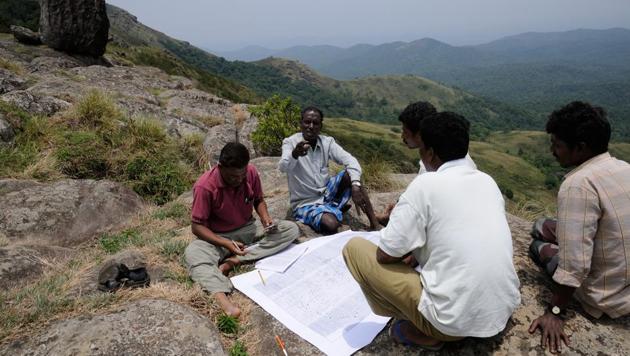Giving rights to forest dwellers will not harm India’s forests
We question the motives behind the continued labelling of forest dwellers as forest destroyers even as evidence mounts that they have actively managed forests — the same forests that we are today enclosing as conservation fortresses.
The forests of India have been customarily managed and shaped over centuries by the ecological practices of forest dwellers. The forests and wildlife that we value so greatly owe their existence to the practices of forest people, and yet modern conservation policy ignores this history and criminalises these very people. We would like to offer a counterview to the fringe conservationist’s position that forest dwellers should not be granted rights to forests because their practices are harmful to the forest.

In his article, Shekar Dattatri echoes the truculent sentiments of a small group of elite conservationists who continue to peddle the canard that people’s use of forests is bad for the forest. Dattatri selectively mines the ecological literature to manufacture a perception of people’s role in forest management that is divorced from scientific and current understandings.
Conservationists are misusing the results of ecological research that we and colleagues at ATREE have conducted to make their claims.
Our long-term ecological work in Biligiri Rangaswamy Temple Tiger Reserve (BRT) shows that restrictions on the use of forests by resident Soliga Adivasi, violates their rights and have several adverse ecological and social outcomes. Inadequate management of forests by the state since 1974 when the forest was declared a wildlife sanctuary has enabled the proliferation of the exotic weed, Lantana camara.
Lantana provides fuel to forest fires and increases the frequency and intensity of fires, apart from choking the seedlings of native tree species and preventing their growth. Lantana that has spread over the entire landscape due to government’s mis-management, and their reluctance to allow Soliga’s the use of their knowledge to manage the forest, is the main driver of the decline in forest health. Grant of forest rights to people so they can partner with the forest department to manage the landscape is perhaps the best strategy to conserve the forest.
Recent studies indicate that of all possible drivers, the presence of weeds such as Lantana has far more debilitating impacts than the harvest of fruits. Writing in the Journal of Applied Ecology in 2012 ecologists from the University of Hawaii and ATREE demonstrated conclusively that ‘mistletoe and lantana, not fruit harvest, are the main drivers of amla decline’. It is disingenuous for conservationists to ignore evidence that the drivers of forest decline are invasive species and parasites and not fruit harvest. Giving rights to forest dwellers will not harm the forests and on the contrary will mitigate the ecological decline that has resulted from the totalizing approach of Forest Departments.
Dattatri’s artful citing of the first of a series of papers suggests intentional obfuscation. Those results published in 2002, were subsequently modified by the authors to conclude that fruit numbers per se contribute very little to growth rates of Amla populations; fire plays a dominant role. The intensity and frequency of fire in turn is affected by Lantana camara that invades open forests, previously logged by the forest department, not by Adivasis.
Furthermore, the 2002 paper was based on data that was collected before rights under the Forest Rights Act (FRA) were granted in BRT in 2011. Since then harvester behaviour has dramatically changed. Amla fruit harvesters leave the trees unharmed and collectors often clean the trees of parasite infestation. The granting of rights and the resulting security of tenure have ensured better outcomes.
Remarkably, and contrary to conservationists’ claims, the number of tigers in BRT have been increasing even after individual and community forest rights were granted to Soliga Adivasi in 2011. The National Tiger Conservation Authority estimated the number of tigers in BRT to be 35 in 2010 and their estimate in 2014 was 69 tigers! During these four years Soliga Adivasi had received rights under the FRA and have been cultivating and living in the reserve. This increase in tiger numbers alongside the granting of forest rights should settle beyond any doubt the debate about whether Adivasis and other forest dwellers can reside in forests and protected areas. Our understanding of ecological processes in BRT may apply to many landscapes across India.
We question the motives behind the continued labeling of forest dwellers as forest destroyers even as evidence mounts that they have actively managed forests — the same forests that we are today enclosing as conservation fortresses.
Nitin D. Rai is with the Ashoka Trust for Research in Ecology and the Environment (ATREE) and Kamaljit S. Bawa is with the University of Massachusetts, Boston and is also President of ATREE.
The views expressed are their own






